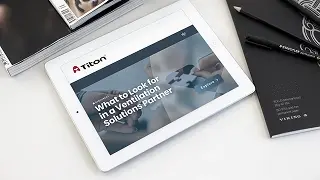Awaab's Law: tackling damp and mould in the social housing sector
The tragic death of two-year-old Awaab Ishak in 2020 from prolonged exposure to damp and mould has driven a fundamental shift in UK housing legislation. Enacted as part of the Social Housing (Regulation) Act 2023, Awaab's Law imposes strict new obligations on social landlords to ensure their properties are safe and free from hazardous conditions.
This landmark law moves the sector away from a reactive maintenance model to a proactive, approach to damp and mould eradication. With a compliance deadline of October 2025, social housing providers must act now to overhaul their processes and protect their residents.
Understanding the timescales: what landlords must do and when
Phase 1: Immediate focus on damp and mould (from October 2025)
The initial phase of Awaab's Law sets a rigid timetable for addressing damp and mould problems and dealing with emergency hazards.
Social landlords must meet the following timelines:
- Initial investigation: Within 14 calendar days of becoming aware of a potential hazard, landlords must conduct a thorough investigation.
- Written report: A detailed report outlining the findings, including the nature of the hazard, its cause, and the next steps, must be provided to the resident.
- Commencement of works: If a significant health or safety risk is identified, repair work must begin within 7 calendar days of the investigation's conclusion.
- Completion of repairs: All repairs must be completed within a "reasonable period." The focus is on addressing the root cause to prevent recurrence, not just cosmetic fixes.
- Emergency repairs: For any hazard posing an imminent threat to life, landlords must take action within 24 hours.
- Alternative accommodation: If a property cannot be made safe within these prescribed timescales, the landlord must arrange and cover the cost of suitable alternative accommodation until the repairs are complete.
Future scope (2026-2027)
While the initial focus is on damp and mould, the legislation will expand to encompass a wider range of housing hazards throughout 2026 and 2027. Landlords are also mandated to maintain extensive records - including photos, reports, and tenant communications - to create a clear audit trail for regulators.
The challenges ahead for social housing providers
While essential for tenant safety, these new regulations present significant operational and financial hurdles for cash-strapped, social housing providers and their contractors.
- Resource and operational strain: Meeting strict deadlines will be challenging in a sector already facing staff shortages. Local Authorities and housing associations will require reliable, expert contractor support to respond effectively.
- Technical complexity: Diagnosing and resolving damp and mould requires specialist expertise. Identifying the root cause often involves sophisticated diagnostic tools to gather evidence, implement effective solutions, and monitor outcomes.
- Design and retrofit demands: Older housing stock frequently requires bespoke retrofit solutions. Designing and implementing compliant ventilation plans that integrate with existing structures demands specialist skills.
- Tenant engagement: Landlords must educate residents on preventing damp and mould in the future. They need the resources and maintenance support to keep on top of future outbreaks.
Navigating compliance: how to prepare for Awaab’s Law
To meet the demands of Awaab's Law, social housing providers and their contractors need comprehensive support across several key areas:
1. Bespoke design and planning:
The law requires documented, effective resolutions for emergency and long-standing ventilation problems, often across large estates.
This means moving beyond quick fixes to strategic, compliant designs. Providers will need:
- Tailored ventilation designs for specific property archetypes.
- CAD/Revit-based plans and commissioning-ready specifications.
- Expert guidance on balancing regulatory compliance with cost, noise, and energy efficiency.
2. Technical and on-site support
Proper installation is critical for long-term success. Key support includes:
- On-site guidance for installation and commissioning.
- Post-installation performance checks, such as airflow testing.
- Training for in-house teams on the latest standards and diagnostic tools.
3. High-performance, compliant ventilation solutions:
Meeting Health and Safety Rating System (HHSRS) thresholds requires proven technology. Teams should be looking for:
- SAP-compliant extract fans, MEV, and MVHR units.
- Products with robust warranties and designed for easy maintenance.
- Noise-compliant solutions suitable for occupied homes.
4. Digital-ready documentation:
Awaab’s Law places the burden of proof on the landlord. You must have systems to:
- Log and track tenant complaints, inspections, and outcomes.
- Utilise real-time dashboards for compliance monitoring.
- Integrate with IoT sensors for predictive maintenance and verifiable audit trails.
5. Strategic bid and project management:
Pre-construction teams need support to produce compliant bids efficiently. This includes:
- Bid support with detailed product specifications, warranties, and certifications.
- Strategic advice on aligning ventilation upgrades with wider retrofit programmes.
- A trusted partner offering a single point of contact for project continuity.
Who can help?
Juggling the complexity of these new requirements and their associated costs will be a major challenge for social housing professionals and their contractors. They will need to find hardware partners who can deliver strategic and practical support around ventilation system design and installation, or risk growing legal challenges, heavy penalties and reputational damage
What Titon does
At Titon, we support social housing providers, contractors, and local authorities with complete ventilation solutions for retrofit and refurbishment that tackle damp and mould at the source. We offer free bespoke design services, CAD-ready specifications, and expert technical support to ensure every system is properly installed, commissioned, and compliant. Our SAP-approved extract fans, MEV, and MVHR units are designed for long-term performance, low maintenance, and quiet operation - perfect for social housing projects.
We also provide dedicated customer service and comprehensive documentation for installation and upkeep, including easy-to-follow guides for tenants to help them keep their homes damp- and mould-free. With our experience in social housing and commitment to Awaab’s Law compliance, we’re here to help create healthier, safer homes.
Ready to prepare your housing stock for Awaab’s Law? Contact Titon today for a consultation with our ventilation compliance experts or get our guide to choosing the right ventilation partner.
Commercial Operations Director
James is responsible for driving sales growth and overseeing the company's commercial strategy. James collaborates closely with Titon's Sales, Customer Services, and Marketing teams to develop new business opportunities and strengthen relationships with both new and existing customers.
You can find James on
LinkedIn.


